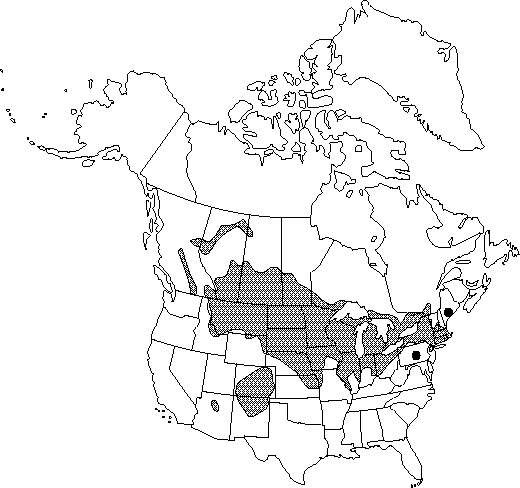Difference between revisions of "Anemone cylindrica"
Ann. Lyceum Nat. Hist. New York 3: 221. 1835.
imported>Volume Importer |
imported>Volume Importer |
||
| Line 52: | Line 52: | ||
|publication year=1835 | |publication year=1835 | ||
|special status=Endemic | |special status=Endemic | ||
| − | |source xml=https:// | + | |source xml=https://bitbucket.org/aafc-mbb/fna-data-curation/src/2e0870ddd59836b60bcf96646a41e87ea5a5943a/coarse_grained_fna_xml/V3/V3_1134.xml |
|genus=Anemone | |genus=Anemone | ||
|species=Anemone cylindrica | |species=Anemone cylindrica | ||
Latest revision as of 21:46, 5 November 2020
Aerial shoots (20-)30-70(-80) cm, from caudices, rarely with very short ascending rhizomes, caudices ascending to vertical. Basal leaves (2-)5-10(-13), ternate; petiole 9-21 cm; terminal leaflet sessile, broadly rhombic to oblanceolate, (2.5-)3-5(-6) × (3-)4-10(-14) cm, base narrowly cuneate, margins crenate, or serrate and deeply incised on distal 1/2, apex narrowly acute, surfaces strigose, more so abaxially; lateral leaflets 1-2×-parted and -lobed; ultimate lobes 4-10(-13) mm wide. Inflorescences (1-)2-8-flowered cymes, sometimes appearing umbellike; peduncle villous to densely villous; involucral bracts 3-7(-9), 2(-3)-tiered (can appear 1-tiered), ternate, ±similar to basal leaves, bases distinct; terminal leaflet sessile, rhombic to oblanceolate, 2.5-6.5 × (1-)1.5-2(-2.5) cm, bases narrowly cuneate, margins serrate and incised on distal 1/3-1/2, apex narrowly acute, surfaces puberulous, more so abaxially; lateral leaflets 1(-2)×-parted or -lobed; ultimate lobes (4-)6-10(-15) mm wide. Flowers: pedicel usually appearing bractless; sepals 4-5(-6), green to whitish, oblong to elliptic or ovate, 5-12(-15) × 3-6 mm, abaxially silky, adaxially glabrous; stamens 50-75. Heads of achenes cylindric; pedicel 10-30 cm. Achenes: body ovoid, (1.8-)2-3 × 1.5-2 mm, not winged, woolly; beak usually recurved, (0.3-)0.5-1 mm, hidden by achene indument, glabrous. 2n=16.
Phenology: Flowering summer (Jun–Jul).
Habitat: Prairies, dry, open woods, pastures, roadsides
Elevation: 300-3000 m
Distribution

Alta., B.C., Man., Ont., Que., Sask., Ariz., Colo., Conn., Idaho, Ill., Ind., Iowa, Kans., Maine, Mass., Mich., Minn., Mo., Mont., Nebr., N.H., N.J., N.Mex., N.Y., N.Dak., Ohio, Pa., R.I., S.Dak., Vt., Wis., Wyo.
Discussion
The cymes of Anemone cylindrica may appear 1-tiered because the second tier of involucres is closely nestled among the leaves of the first tier. The cymes then resemble umbels with unusually leafy involucral bracts; they might be misinterpreted as such.
Anemone cylindrica was used medicinally by Native Americans for headaches, sore eyes, and bad burns, as a psychological aid, and as a relief for tuberculosis (D. E. Moerman 1986).
Selected References
None.